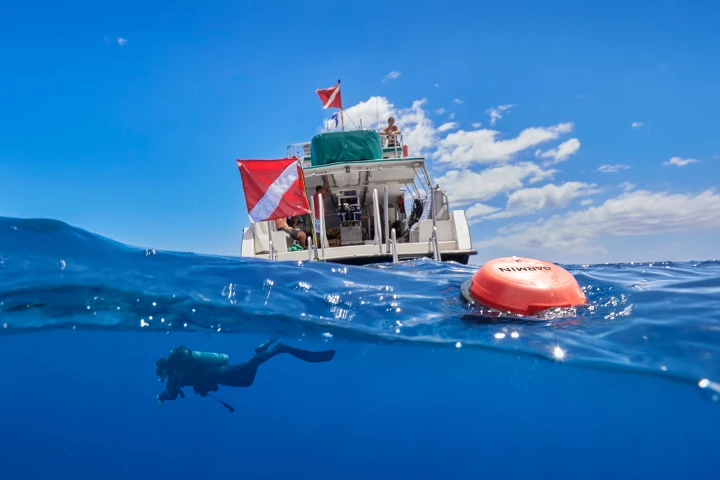Underwater
-
It's plenty easy to lose your bearings while scuba diving, which is why Garmin's new Descent S1 Smart Buoy could really come in handy. It helps submerged divers figure out where they are, plus it lets them communicate with their topside crew.
-
Aerial jetpacks may still not be readily available, but underwater jetpacks? Those are another story. The relatively affordable XiaoTun is the latest to cross our radar, shooting wearers up to a maximum submerged speed of almost five feet per second.
-
While we've seen a number of wearable underwater propulsion systems, they've typically been strapped to the user's arms or legs. The newly refreshed CudaJet is different, in that it's a true backpack-style underwater jetpack.
-
In an effort to reduce the use of precious land to build renewable energy storage facilities, the Fraunhofer Institute has been cooking up a wild but plausible idea: dropping concrete storage spheres down to the depths of our oceans.
-
It’s hard to get glue to work underwater – unless you’re a mussel. Scientists have now created a new adhesive that combines the stickiness of mussel’s natural glue with the slimy, germ-repelling nature of mucus.
-
When you think of bamboo, you probably don't think of sea-spanning bridges or world records or typhoons, but it's been eight years and the bamboo is just fine.
-
Augmented reality comes to deep-sea divers, thanks to the US Navy's Office of Naval Research (ONR) and Coda Octopus's Divers Augmented Vision Display (DAVD) system. The setup turns any standard diving hard helmet into a digital information center.
-
Jinan, a city of 9.4 million people and the capital of Shandong Province in East China, has made world headlines. Crews working there have completed the monumental task of building the world's largest-diameter underwater shield tunnel.
-
From fire-breathers to sprinters, climbers and gymnasts, we've seen more than our fair share of impressive quadruped robots. Now the fourth-generation Honey Badger has added underwater walkies to the list of robodog capabilities.
-
A remarkable semi-submersible ecotourism concept that takes passengers above and below the water has just received a zero-emission boost thanks to a new partnership between Platypus Craft and electric outboard manufacturer Evoy.
-
A strange sea creature known as the salp reproduces asexually, building long chains of clones. Researchers have now decoded the way these long salp chains propel themselves, a finding that could lead to better propulsion systems for underwater vehicles.
-
If scuba divers use inflatable BCDs (buoyancy control devices), why don't underwater robots? Well, an experimental new one does, and the technology is said to be much more energy-efficient than traditional methods of moving up and down in the water.
Load More











